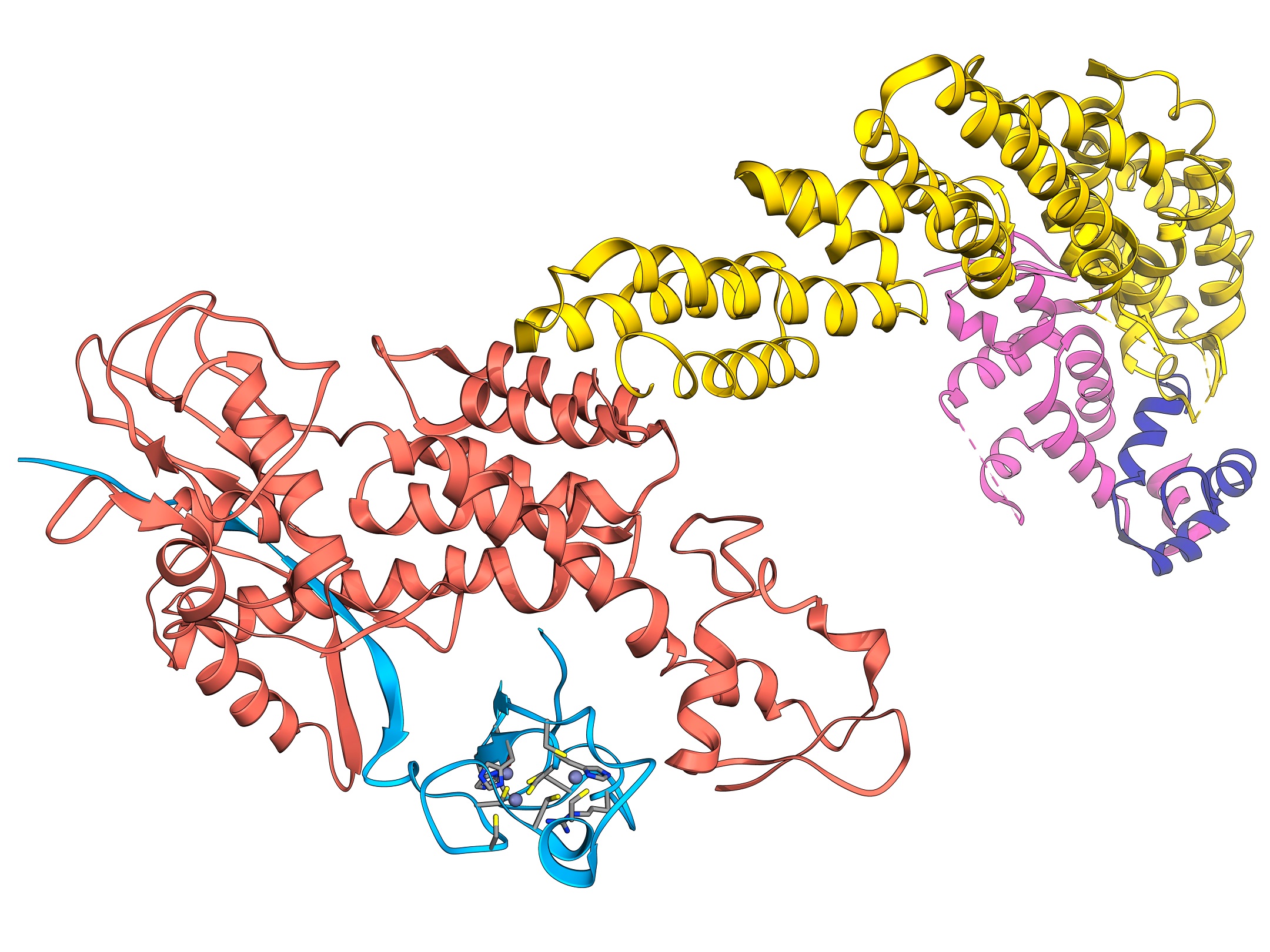
Rare mutation linked to autism affects language ability
Mutations in a gene called TRIP12 — which is involved in tagging proteins for destruction — can lead to intellectual disability, language delay and autism.
Mutations in a gene called TRIP12 can lead to intellectual disability, language delay and autism, two new studies suggest1,2.
TRIP12 encodes a protein that tags other proteins for destruction. A protein with a similar function, called UBE3A, is implicated in autism and in a related condition called Angelman syndrome.
It is not yet clear how these proteins contribute to autism, but degrading proteins may alter gene expression.
“We know of some other genes in this pathway that were previously shown to be pathogenic for intellectual disability or autism,” says Pawel Stankiewicz, associate professor of molecular and human genetics at Baylor College of Medicine in Houston, Texas, who led led one of the new studies. “I’m pretty sure there will be more to come.”
The new studies provide a detailed description of features in 19 people with a mutation in TRIP12; 14 of these individuals have autism features.
TRIP12 is a relatively new autism candidate. A pair of sequencing studies in 2014 uncovered harmful TRIP12 mutations in four people with autism but not in their parents. And a 2015 study revealed a small deletion that erased the protein in an individual with autism.
In the new work, researchers looked at people who had been referred to clinics to look for mutations that might explain their difficulties. They found that people with a mutation in the gene have poor language skills.
The study shows the importance of analyzing all the effects of mutations in a particular gene, instead of characterizing people with a certain condition, says Raphael Bernier, associate professor of psychiatry and behavioral science at the University of Washington in Seattle. Bernier contributed to the second study.
“By assessing across clinical diagnostic boundaries, we can get a better sense of what the ‘real’ phenotype is,” he says.
Familiar features:
Stankiewicz and his team described five people with small deletions that include the TRIP12 gene and four with mutations within the gene. All nine have intellectual disability or developmental delay, and most were referred to a clinical genetics program at Baylor College of Medicine. Six of the individuals have features of autism, such as poor social interaction and repetitive behaviors, but it is unclear whether they meet diagnostic criteria for the condition.
Of eight individuals for whom the researchers had detailed clinical information, only one is able to speak fluently. Four of the participants have distinct physical features such as obesity, a downturned mouth and narrow, slanting eyes.
In the second study, an independent team identified seven individuals with TRIP12 mutations who were identified in the course of diagnostic sequencing for intellectual disability or autism. (One individual is included in both of the new studies.)
The researchers combined these findings with data from another four individuals identified in earlier sequencing studies. Of the 11 individuals, 10 have intellectual disability, 8 have autism, 6 have fluent speech, and 5 are limited to single words or phrases.
The two new studies may differ in the prevalence of poor language ability because of the types of TRIP12 mutations, Stankiewicz says.
The studies show the strengths and limitations of using medical records to characterize a mutation, says Ellen Hanson, director of the Neurodevelopmental Disorders Phenotyping Program at Children’s Hospital Boston, who was not involved in the studies.
The records allowed the researchers to pull together a sizeable group of people with mutations in the same gene. But because the researchers relied on medical records from different clinics, it is difficult to accurately compare the participants’ features, she says.
The next step is to better understand the effect of TRIP12 mutations in the brain. The gene is known to interact in a network of genes, including ones tied to autism, that regulate other genes.
References:
Recommended reading

Developmental delay patterns differ with diagnosis; and more

Split gene therapy delivers promise in mice modeling Dravet syndrome

Changes in autism scores across childhood differ between girls and boys
Explore more from The Transmitter

Smell studies often use unnaturally high odor concentrations, analysis reveals

‘Natural Neuroscience: Toward a Systems Neuroscience of Natural Behaviors,’ an excerpt
